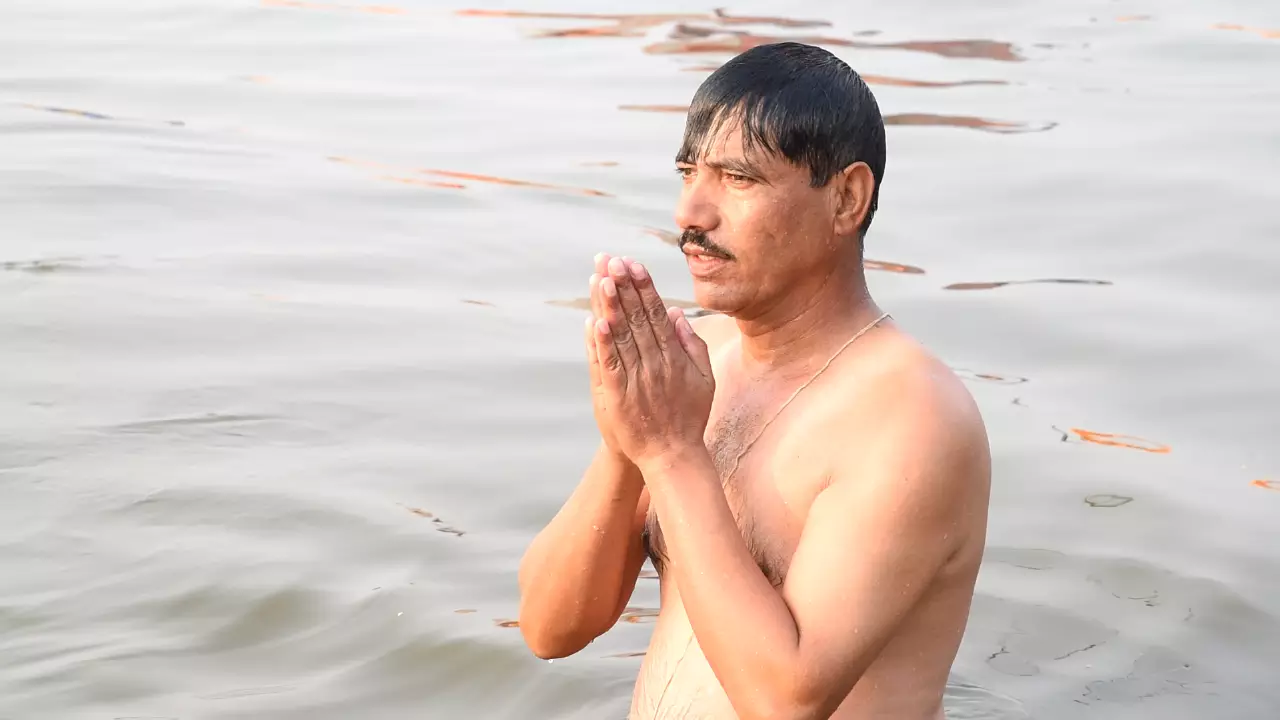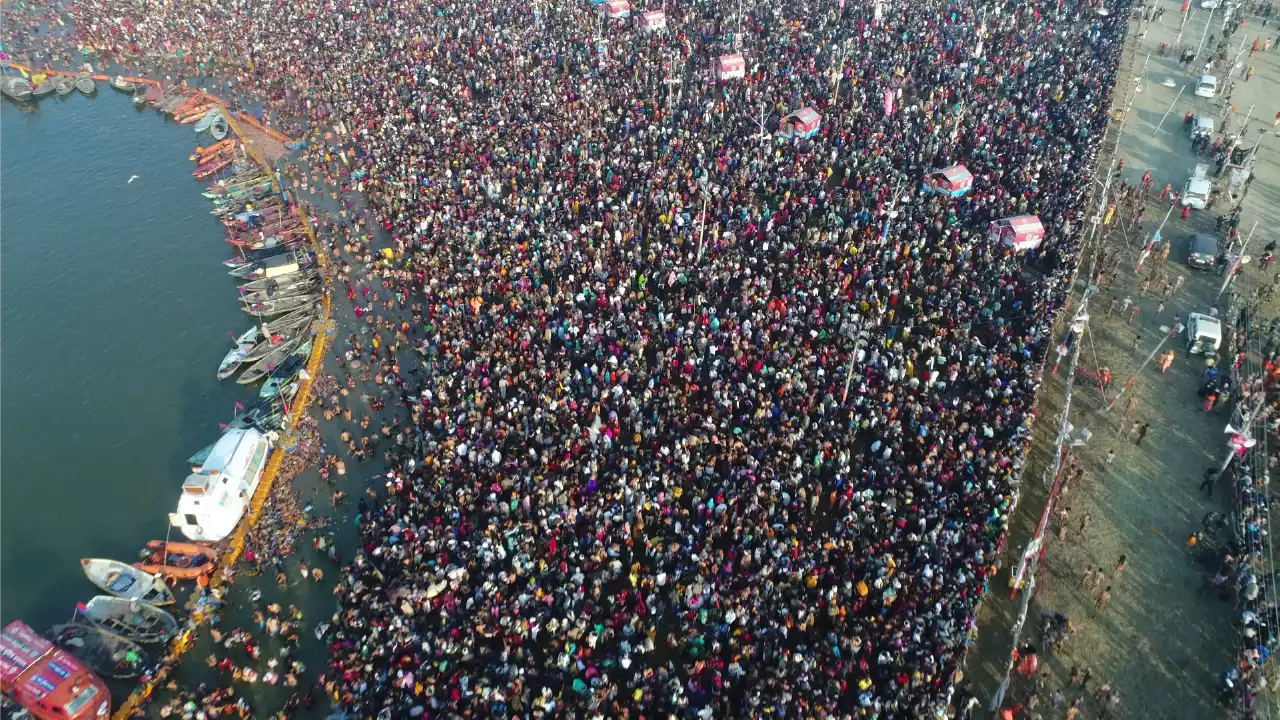What is the Kumbh Mela? A Beginner’s Guide to the World’s Largest Spiritual Gathering
The Kumbh Mela is more than just a gathering—it is a living tradition that breathes through the heart of India’s spirituality. Recognized as the largest spiritual congregation on Earth, it draws millions of devotees, ascetics, and seekers who come together to celebrate the eternal rhythm of Sanatan Dharma.
Having witnessed the grandeur of this sacred event across the four sites—Prayag, Haridwar, Ujjain, and Nashik—I have often felt that the Kumbh Mela is not only a festival but also a mirror reflecting the faith and philosophical depth of Hindu civilization.
The Meaning and Essence of Kumbh Mela
The term Kumbh Mela comes from Sanskrit—Kumbha meaning “pitcher” or “Kalasha,” and Mela signifying “gathering” or “festival.” Together, they symbolize the meeting of spirit and matter, much like the merging of rivers at the sacred confluences where the festival takes place.
This gathering unfolds not by human planning alone but through divine timing rooted in astrological precision. Every twelve years, when planetary alignments create a rare cosmic harmony, millions gather to purify their souls through ritual baths and spiritual observances.

The Kumbh Mela manifests across four ancient tirthas (pilgrimage sites), each blessed by drops of the Amrit (nectar) that fell to Earth during the legendary churning of the ocean:
-
Prayag (Allahabad) – where the Ganga, Yamuna, and the mystical Saraswati meet.
-
Haridwar – where the Ganga descends into the plains.
-
Ujjain – blessed by the sacred Kshipra River, marking the Simhastha Kumbh.
-
Nashik (Trimbakeshwar) – on the serene banks of the Godavari River.
These places become living embodiments of divine presence during the Kumbh Mela.
The Vedic and Puranic Origins
According to the Puranas, the roots of the Kumbh Mela lie in the cosmic event of Samudra Manthan (Churning of the Ocean of Milk). Both the Devas (gods) and Asuras (demons) sought the Amrit, the nectar of immortality. When it finally emerged, carried by Lord Dhanvantari in a pot (Kumbh), a celestial conflict followed.
As Lord Vishnu, in his enchanting form of Mohini, tried to protect the nectar, a few drops fell upon four sacred places—Prayag, Haridwar, Ujjain, and Nashik. These spots were forever sanctified with the divine essence of immortality, and thus began the tradition of the Kumbh Mela.
The Agni Purana, Bhagavata Purana, and Matsya Purana describe how the Kalasha represents the entire cosmos. Vishnu rests at its mouth, Shiva guards the neck, and Brahma anchors the base. The purity of the water within embodies creation itself—holding within it all the oceans, mountains, and Vedas.
The Celestial Calculations Behind Kumbh Mela
The timing of each Kumbh Mela is decided by ancient Jyotish Shastra (astrology). It isn’t simply fixed by date but by the divine interplay of planets—the Sun, Moon, and Jupiter (Guru). When these luminaries enter specific zodiac signs, they create a powerful cosmic energy field known as Kumbha Yoga.
-
Prayag: When Jupiter enters Aries and the Sun and Moon align in Capricorn
-
Haridwar: When Jupiter moves through Aquarius and the Sun enters Aries
-
Ujjain and Nashik: When both Sun and Jupiter align in Leo
It is believed that the waters at these tirthas absorb celestial energy during these configurations. Taking a dip—known as Snan—under these influences can cleanse karmic impurities and lead the soul toward moksha (liberation).
Sacred Rituals and the Spiritual Core of Kumbh Mela

The Triveni Sangam: The Heart of Faith
In Prayag, the Triveni Sangam, or confluence of the Ganga, Yamuna, and the ethereal Saraswati, holds supreme sanctity. As I have seen, the sight of the merging rivers carries a unique tranquility; one can almost feel the hum of divine presence. The Rigveda itself honors this confluence as the holiest of Tirthas.
The Holy Bath (Snan)
The sacred bath, or Snan, is the very soul of the Kumbh Mela. Devotees believe that bathing in these energized waters during the most auspicious timings cleanses their sins and purifies their consciousness. This act, known as punya snan, is not merely symbolic—it is the living embodiment of surrender and purification.
On major Shahi Snan (Royal Bath) days, the rivers appear to glow with a spiritual radiance as millions gather to embrace the sacred waters.
The Akharas and the Shahi Snan
The Akhara tradition adds a spectacular dimension to the Kumbh Mela. Established by Adi Shankaracharya to protect and sustain the Vedic dharma, these monastic orders house ascetics, saints, and yogis who live beyond worldly ties.
Their grand Shahi Snan processions are breathtaking—waves of saffron flags, conch shells, chants of the Har Har Mahadev, and radiant energy of Naga Sadhus leading the march to the river. These ascetics embody both renunciation and boundless devotion, reminding everyone of the eternal pursuit of truth that lies beneath the outer grandeur.
The Philosophy Behind the Gathering
The Kumbh Mela teaches one essential spiritual law: that all paths lead to the same divine truth. The sacred dip is symbolic of cleansing the inner self, the mind, and the ego—releasing the attachments that bind us to material life.
Scriptures such as the Bhagavad Gita guide us toward the realization of the Purusharthas—Dharma (duty), Artha (meaning/wealth), Kama (desire), and Moksha (liberation). Participating in the Kumbh Mela is seen as a living Yajna, a sacred sacrifice of one’s self into the stream of cosmic order.
Tracing the Historical Journey of the Kumbh Mela

The spiritual significance of Prayag and the other sites predates written history. References to their sanctity appear in the Rigveda, which speaks of the meeting of holy rivers. The Mahabharata and Ramayana too revere Prayag as the junction between heaven and earth.
-
Vedic and Epic Eras: Prayag is venerated as Tirtharaja, the king of pilgrimage sites.
-
7th Century: The Chinese monk Hsuan Tsang documented a grand gathering at Prayag in 643 CE, organized by King Harshavardhana, where he distributed alms and gold to thousands.
-
Modern Era: The term Kumbh Mela became associated with Prayag after the 19th century, drawing inspiration from Haridwar’s ancient tradition. Scholars like Kama Maclean have suggested that the Kumbh gained renewed identity in colonial times as a symbol of Hindu unity and resilience.
Today, despite modern technology and global awareness, the Kumbh Mela retains its timeless essence. The devotion, humility, and sense of divine togetherness remain untouched, continuing to attract millions in an unbroken chain of faith.
Why the Kumbh Mela Still Matters Today
The Kumbh Mela is not just a Hindu festival—it is a testament to humanity’s spiritual hunger. At a time when material pursuits dominate the world, this gathering reminds us of something pure and eternal: the quest to unite with the divine.
When one stands on the riverbank amidst chants and the scent of incense, there’s a feeling that the boundaries of time dissolve. The merging rivers, the rising sun, and the millions in prayer evoke the same sacred energy that our ancestors felt thousands of years ago.
In every Kumbh Mela, I find not only devotion but a reflection of the ancient wisdom of India—a living continuity of the Vedas, the Puranas, and the aspirations of countless seekers who have walked this land.
Final Thought
The Kumbh Mela remains a journey of both outer pilgrimage and inner realization. It connects heaven and earth, faith and reason, time and eternity. Beyond its staggering size and historical depth, it is a reminder that within each of us flows a sacred river—waiting to merge with the infinite.

